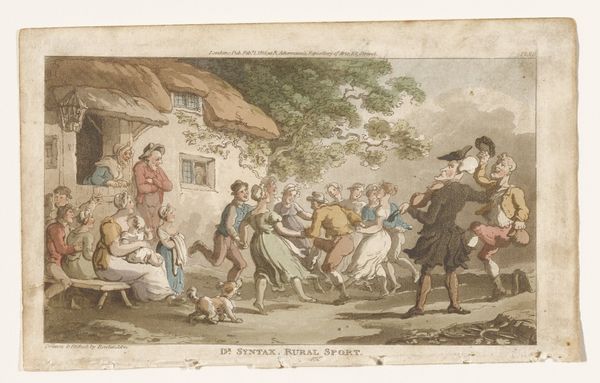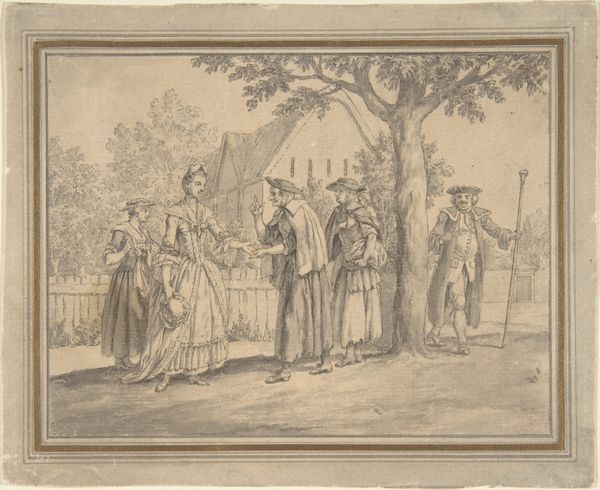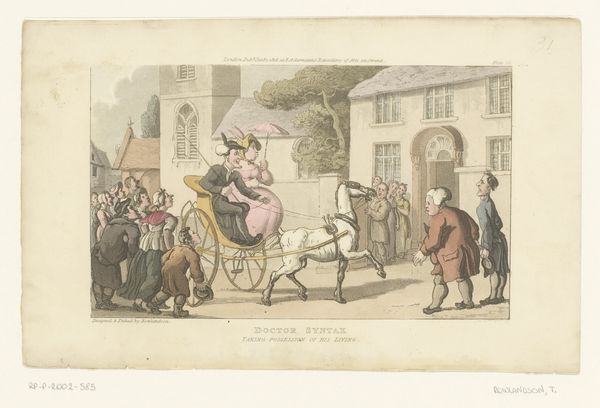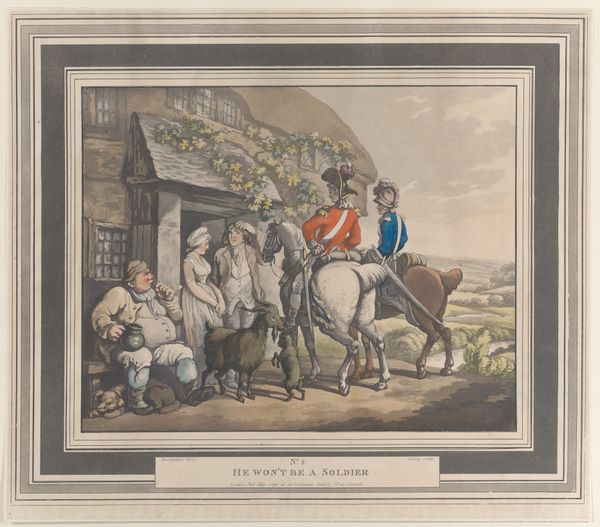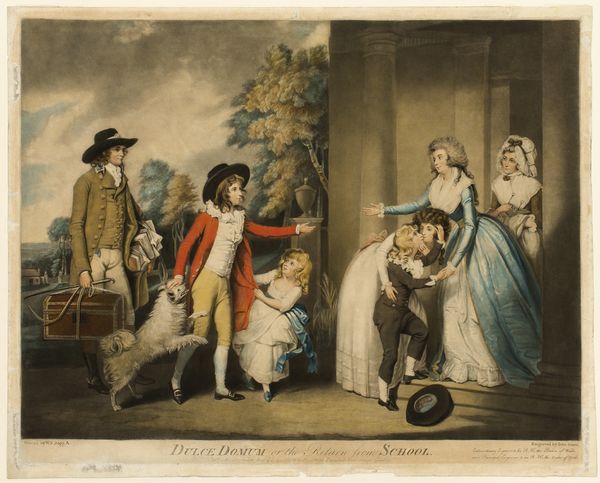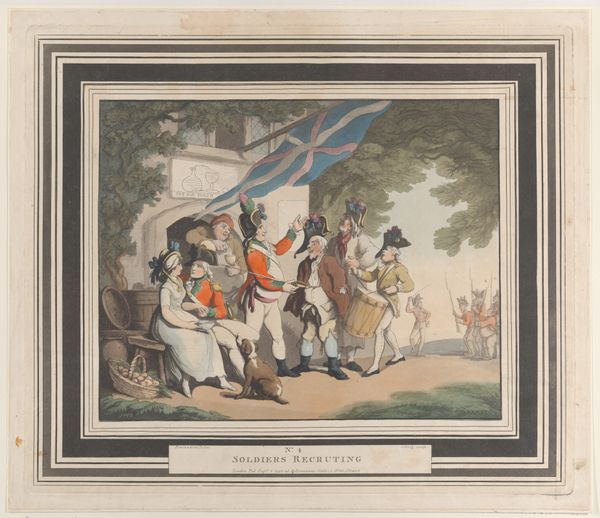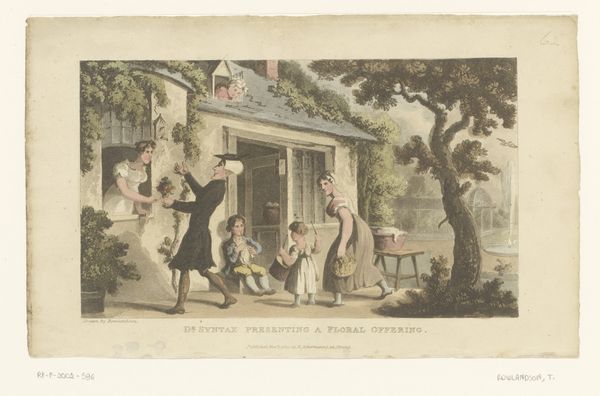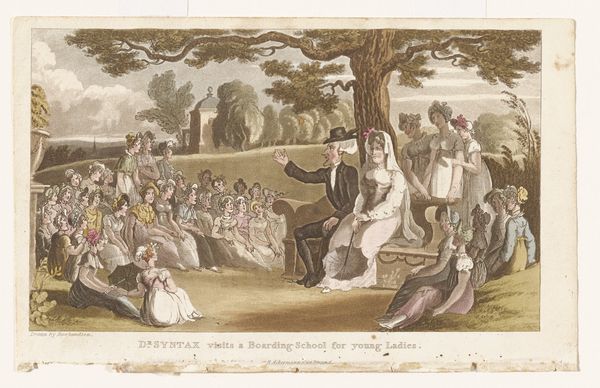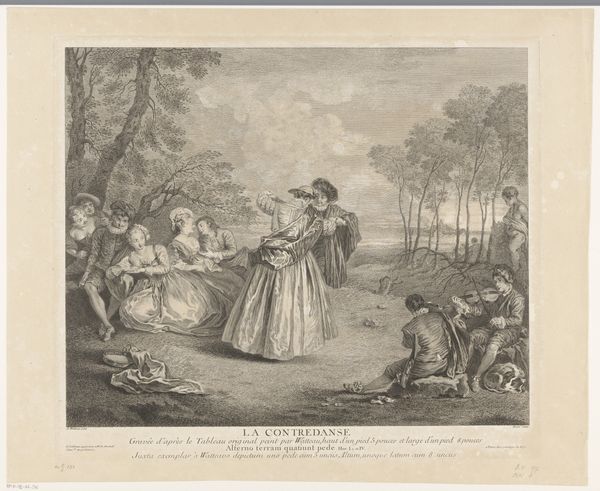
drawing, print, watercolor
#
portrait
#
drawing
#
fairy-painting
#
water colours
# print
#
dog
#
personal sketchbook
#
watercolor
#
child
#
romanticism
#
men
#
genre-painting
#
watercolor
Dimensions: Sheet: 9 7/16 × 11 5/8 in. (24 × 29.6 cm)
Copyright: Public Domain
Curator: This watercolor print, created around 1792 by Samuel Alken, is titled "Benevolence." It’s currently housed at the Metropolitan Museum of Art. Editor: My first thought? It feels like a stage. The figures are arranged so precisely. And that light, muted palette—almost wistful, but is there a darker narrative lurking underneath? Curator: Well, it's useful to think about the period. Alken was working in a time of vast social inequalities, especially in England. Genre painting was beginning to be recognised for it’s importance, depicting everyday life, with often implicit commentary. Considering that, what does ‘benevolence’ mean in this context? Who exactly is enacting it, and what structures are they propping up, even with supposed generosity? Editor: Ooh, you’re taking a critical lens! I see that, certainly. The affluent gentlemen seated around the table seem a world away from the mother and child approaching them. Yet, is it benevolence or simply performance? The stiff formality contrasted with the implied desperation creates an interesting tension, what do you think about that? Curator: Precisely! Alken is drawing our attention to the social contract itself. The placement of the figures, and their interactions tell the story of a specific hierarchical world. Editor: I also keep getting drawn to the dog, that skinny, spotted greyhound at the main man’s feet. Animals often carry allegorical weight. Is this creature fidelity, or merely another possession, reflective of social and financial status? I can't put my finger on it, but something doesn’t feel right to me… Curator: The greyhound, and the men themselves for that matter, can all be regarded as assets in that era, but more deeply as part of a structure based on land, class and status. In addition, Alken invites us to consider where the boundaries of care lie. Who is considered deserving and what is the personal motivation for this behaviour. Editor: You've given me so much food for thought here. Alken’s “Benevolence” appears like a simple period tableau on the surface, but opens so many avenues to understand broader social themes, with often uncomfortable associations, of an exploitative time! Curator: Exactly. It's a reminder to critically examine gestures of charity and the systems they support. And for me it emphasizes the vital intersectional role of visual art to better reveal underlying historic structures and dynamics of exploitation.
Comments
No comments
Be the first to comment and join the conversation on the ultimate creative platform.


